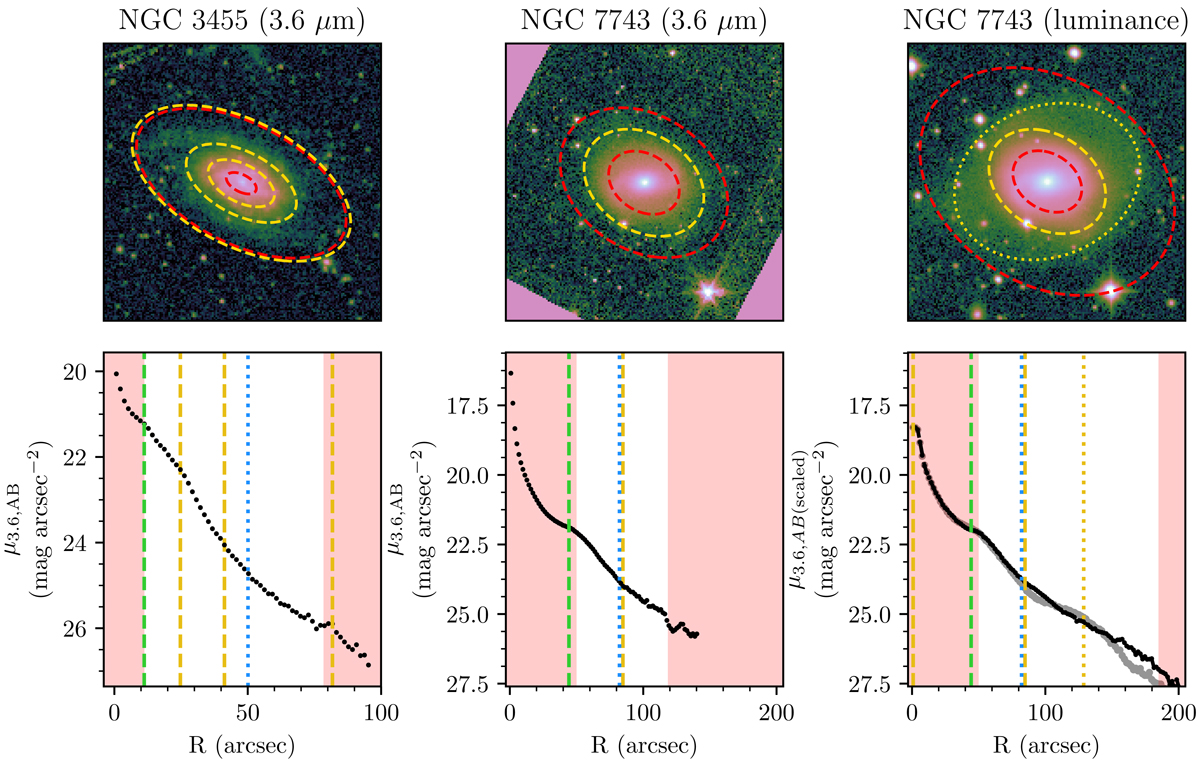Fig. 9.

Galaxies ending in Type IIId disk breaks which seem to show faint Type IId breaks at larger radius. Ellipses, vertical lines, and shaded regions are as in Fig. 1, 3, and 4. Left: NGC 3455 in 3.6 μm, with mild evidence of a Type IId break occurring just beyond the galaxy’s faint outer spiral arms. Middle: NGC 7743 in 3.6μm, with no evidence of an outer Type IId break. Right: NGC 7743 in a luminance filter, converted roughly to 3.6 μm AB magnitudes by scaling the surface brightness profile to the S4G profile at the 90% flux radius (image taken as part of the HERON survey; Rich et al. 2017). The image scale and surface brightness scale are the same as in the middle panels. Black points show the profile using the S4G isophotal parameters, which are clearly not representative of the outer disk; we therefore show a profile using a more appropriate position angle and ellipticity in gray points as well. We note that the outer disk contains an extremely faint outer ring, at the peak of which is a clear Type II disk break, when the correct isophote shape is used (dotted yellow ellipse and vertical line). The outer radius boundary here denotes where the black profile reaches the surface brightness of surrounding Galactic cirrus (μ3.6, scaled ∼ 27; this cirrus also causes the additional Type III break near R ∼ 170″ in the gray profile).
Current usage metrics show cumulative count of Article Views (full-text article views including HTML views, PDF and ePub downloads, according to the available data) and Abstracts Views on Vision4Press platform.
Data correspond to usage on the plateform after 2015. The current usage metrics is available 48-96 hours after online publication and is updated daily on week days.
Initial download of the metrics may take a while.


